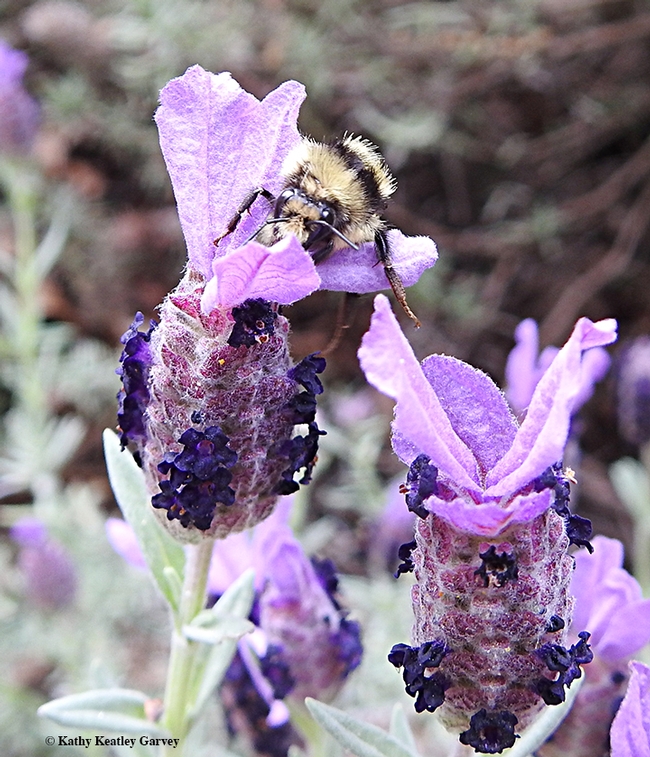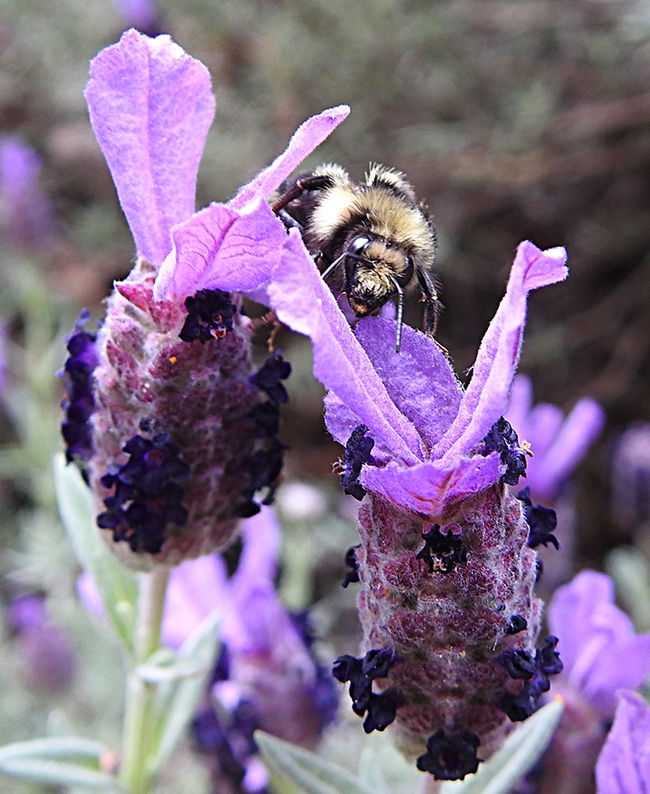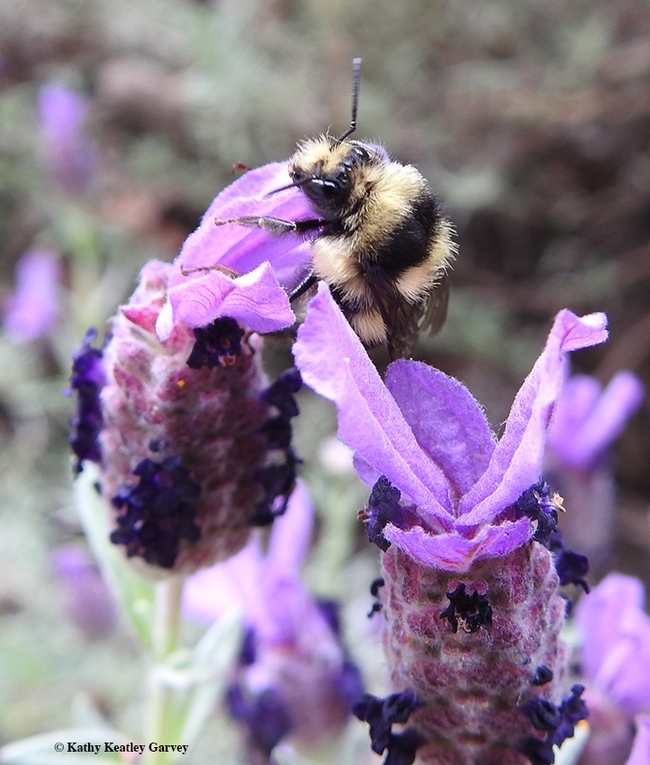Benjamin Franklin reportedly said: "Early to bed and early to rise, makes a man healthy, wealthy, and wise."
What about the sleeping patterns of bumble bees?
Bumble bees are definitely early risers--if the weather cooperates. They usually forage earlier than honey bees and also in cooler temperatures.
We spotted this bumble bee, Bombus melanopygus, commonly known as a "black-tailed bumble bee," sleeping on a Spanish lavender blossom April 12 in a Vacaville, Calif. park.
Native to western North America and found from California to British Columbia and as far east as Idaho, it forages on manzanitas, wild lilacs, wild buckwheats, lupines, penstemons, clovers, and sages, among others.
Keep your eye out for this bumble bee, which is the first species we see in this area. It will be the focus of the Robbin Thorp Memorial Bumble Bee Contest, which starts Jan. 1, 2021. The Bohart Museum of Entomology, directed by Lynn Kimsey, UC Davis professor of entomology, will sponsor the contest to see who can find the first one of the year.
Professor Thorp (1933-2019), a member of the UC Davis entomology faculty for 30 years, from 1964-1994, achieved emeritus status in 1994 but continued to engage in research, teaching and public service until a few weeks before his death. In 2014, during his retirement, he co-authored two books, Bumble Bees of North America: An Identification Guide and California Bees and Blooms: A Guide for Gardeners and Naturalists. He was among the instructors (2002-2019) of The Bee Course. This is an intensive nine-day workshop affiliated with the American Museum of Natural History and held annually at the Southwestern Research Station, Portal, Ariz. It's geared for conservation biologists, pollination ecologists, and other biologists who want to gain greater knowledge of the systematics and biology of bees.
For the past several years, several of us bumble bee enthusiasts, encouraged by Professor Thorp, have tried to find the first bumble bee of the year in the two-county area of Yolo and Solano. He always expressed delight when we reported back to him. This year Allan Jones of Davis photographed one on Jan. 6 on a white manzanita in the UC Davis Arboretum and Public Garden (Yolo County) to win the contest. The bumble bee been found as early as Jan. 1 in Benicia (Solano County).
Still, no matter the month, it's a joy to see. This one's for you, Robbin.
Attached Images:

A bumble bee, Bombus melanopygus, commonly known as a "black-tailed bumble bee," awakens on a Spanish lavender in a Vacaville park. (Photo by Kathy Keatley Garvey)

Good morning! The Bombus melanopygus peers over a Spanish lavender in a Vacaville park. (Photo by Kathy Keatley Garvey)

Time to forage! The Bombus melanopygus peers investigages a Spanish lavender in a Vacaville park. (Photo by Kathy Keatley Garvey)